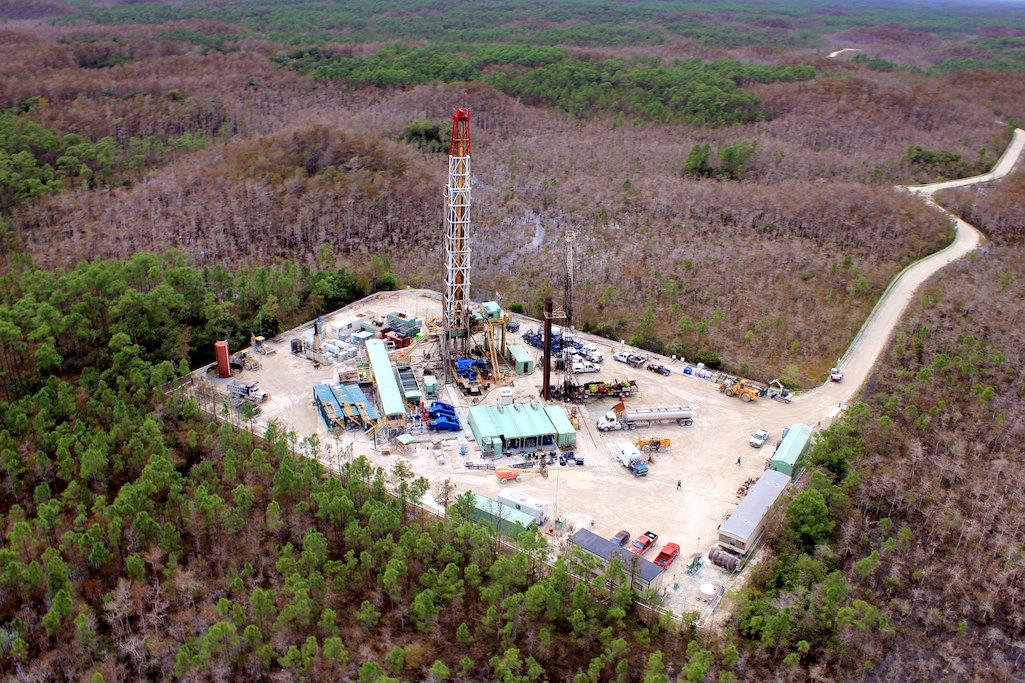
Outside groups say impacts associated with creating two oil well drilling pads such as this one in Big Cypress National Preserve require an intensive environmental impact statement/NPS file
An environmental assessment being prepared on oil drilling plans at Big Cypress National Preserve in Florida submitted by Burnett Oil Co. could prompt the National Park Service to decide a more extensive environmental impact statement on those plans is warranted.
"As part of the Burnett Oil application review, an interdisciplinary team analyzed previous nonfederal oil and gas rights regulatory actions that have occurred in the Big Cypress National Preserve and determined the operations proposed would be similar in anticipated impacts," Saudia Muwwakkil, the assistant regional director for communications and legislative affairs in the South Atlantic-Gulf Region Office of the Park Service, said Wednesday in an email.
"Based on the information gathered to date and the initial review of the permit application, the regional team has recommended preparation of an environmental assessment as an appropriate level of National Environmental Policy Act analysis. The EA will provide sufficient evidence and analysis for determining whether to prepare an EIS or a finding of no significant impact," she added.
Burnett, a Texas company doing work for the Collier Resources Co., spent parts of 2017 and 2018 conducting seismic testing in Big Cypress in a search for oil. While the company hasn't publicly stated what that testing indicated, in late January it applied to both the state of Florida and the National Park Service at Big Cypress for the necessary permits to develop two well pads from which to snake drill bits horizontally beneath the preserve landscape and, hopefully, into economically rich oil reservoirs.
At the time, Big Cypress Superintendent Thomas Forsyth said his staff would prepare an EA on the drilling proposal. Outside groups have argued that's not a suitable or sufficient approach for trying to determine how greatly Big Cypress' landscape, flora, and fauna might be impacted by drilling.
Burnett's proposed well pads would be located along Interstate 75 between Fort Launderdale and Naples and a bit north of U.S. 41 where Collier, Broward, and Miami-Dade counties meet. The company has said it would reduce potential impacts by using directional drilling to avoid the need for additional well pads. However, the work could involve construction of roads of 1.5 miles or more in length across the preserve's marl prairie to reach the pad sites.
The plans are concerning to outside groups.
"The Miccosukee Tribe is deeply concerned whenever there is a request to potentially disturb and in some instances destroy cultural sites and adversely impact the environment," Kevin Donaldson, the tribe's director of Real Estate Services and the appointed representative for Tribal Historic Preservation, told Traveler in February. "The area Burnett Oil is seeking to explore is within Indian Country in Big Cypress National Preserve which is very close to the Miccosukee Federal Reservation. This area is replete with known cultural sites which cannot be impacted. The tribe is looking at this application closely to fully evaluate the request and ensure that Miccosukee interests are protected and preserved for future generations."
A draft EA on the drilling proposal could be released as soon as late April or early May. While the Big Cypress superintendent has refused to release Burnett's drilling proposal until the draft EA is ready, outside groups are trying to obtain it through a Freedom of Information Act request.
Past Traveler stories pertaining to this project include:
Mixing Oil And Water At Big Cypress National Preserve
Army Corps Finds Big Cypress National Preserve Oil Exploration Caused Adverse Impacts
Army Corps Reverses Position On Oil Company's Impacts On Big Cypress National Preserve
Groups Want Florida To Purchase Big Cypress National Preserve Mineral Rights
Burnett Oil Inching Towards Drilling At Big Cypress National Preserve
Oil Drilling At Big Cypress National Preserve Might Not Require EIS
Geologists Share Their Concerns With Drilling For Oil In Big Cypress

 Support Essential Coverage of Essential Places
Support Essential Coverage of Essential Places




Comments
Yep, like I figured, they're going to try to segment this mess into however many incremental little pieces it takes to slide the whole oily mess through in multiple fake FONSIs. Before anybody, other than the folks at or in cahoots with Burnett and Collier, knows it, they'll have a pumping station, trucking terminal, and, what the hell, maybe a fullblown refinery out there and it will all be covered by a million separate FONSIs, each covering one square yard of road, one sixteen foot piece of pipe, each single valve, or one sheet of roofing. Due process be damned.